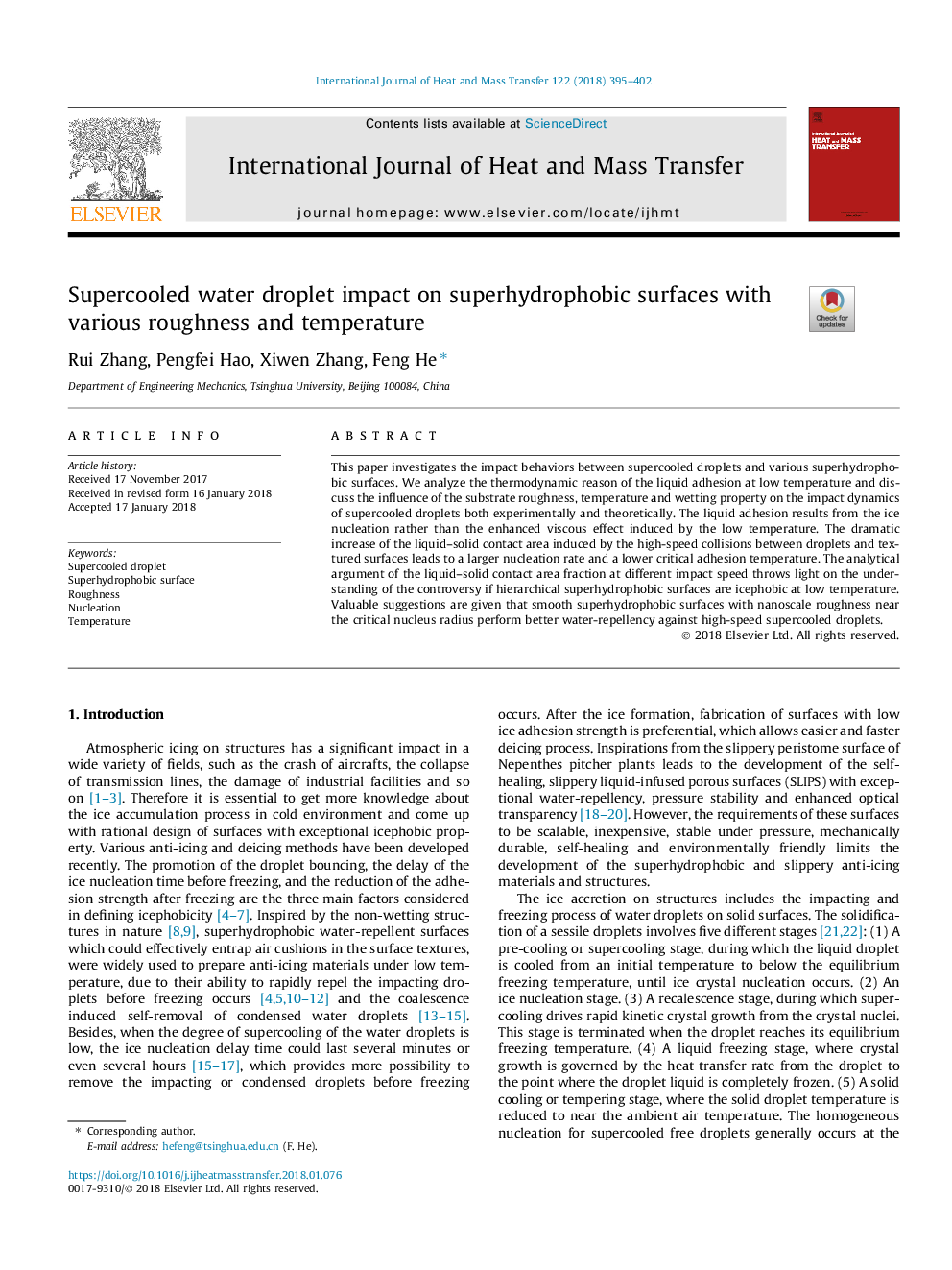| Article ID | Journal | Published Year | Pages | File Type |
|---|---|---|---|---|
| 7054378 | International Journal of Heat and Mass Transfer | 2018 | 8 Pages |
Abstract
This paper investigates the impact behaviors between supercooled droplets and various superhydrophobic surfaces. We analyze the thermodynamic reason of the liquid adhesion at low temperature and discuss the influence of the substrate roughness, temperature and wetting property on the impact dynamics of supercooled droplets both experimentally and theoretically. The liquid adhesion results from the ice nucleation rather than the enhanced viscous effect induced by the low temperature. The dramatic increase of the liquid-solid contact area induced by the high-speed collisions between droplets and textured surfaces leads to a larger nucleation rate and a lower critical adhesion temperature. The analytical argument of the liquid-solid contact area fraction at different impact speed throws light on the understanding of the controversy if hierarchical superhydrophobic surfaces are icephobic at low temperature. Valuable suggestions are given that smooth superhydrophobic surfaces with nanoscale roughness near the critical nucleus radius perform better water-repellency against high-speed supercooled droplets.
Related Topics
Physical Sciences and Engineering
Chemical Engineering
Fluid Flow and Transfer Processes
Authors
Rui Zhang, Pengfei Hao, Xiwen Zhang, Feng He,
